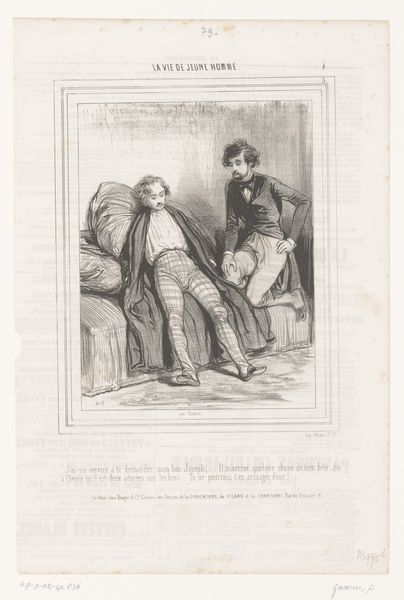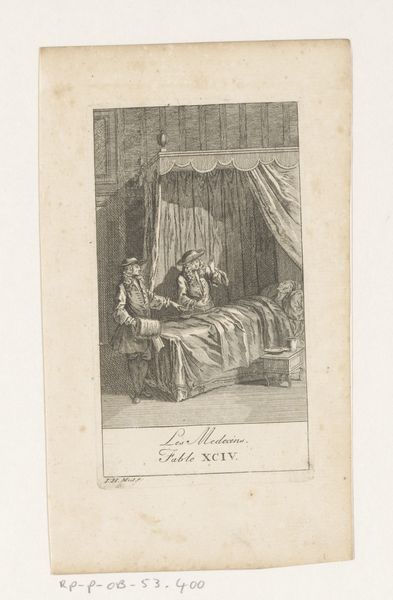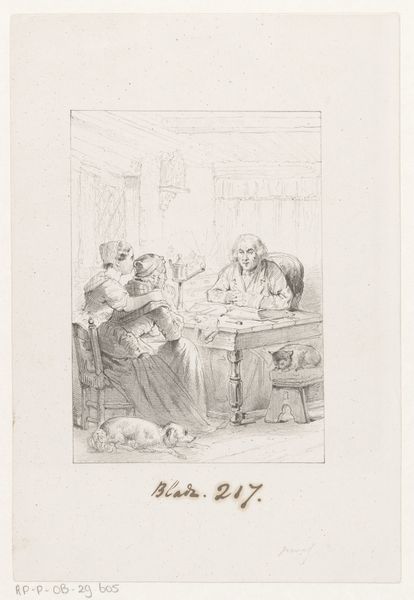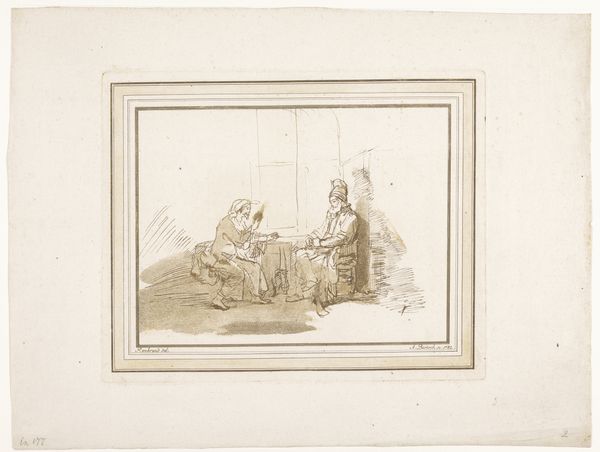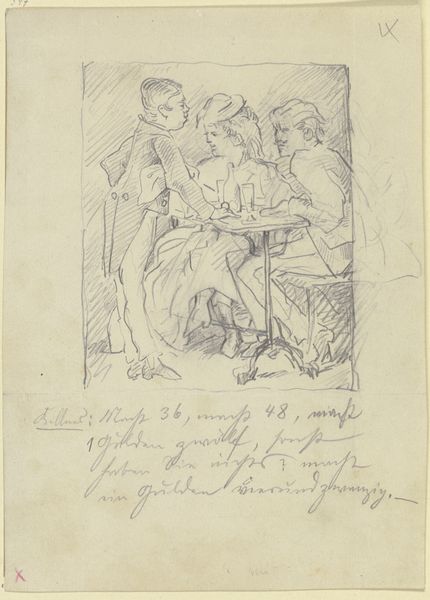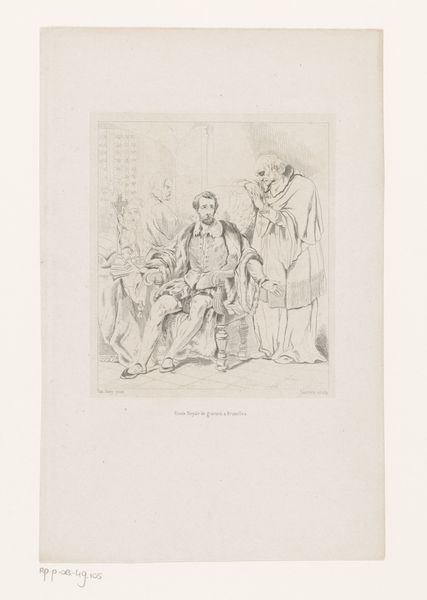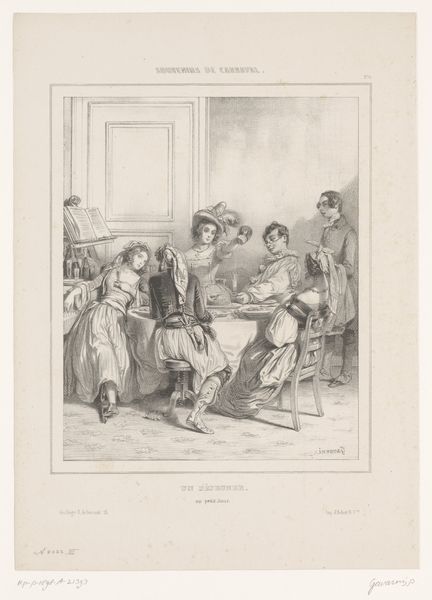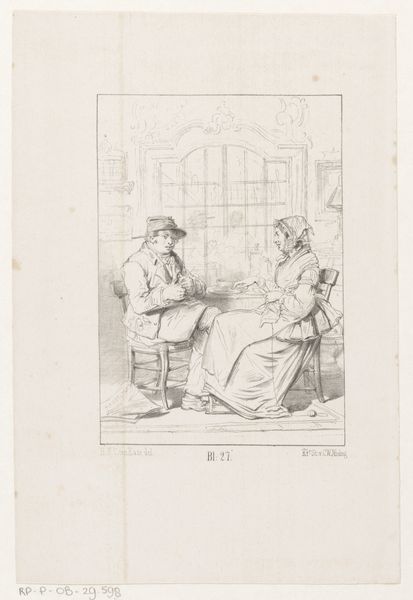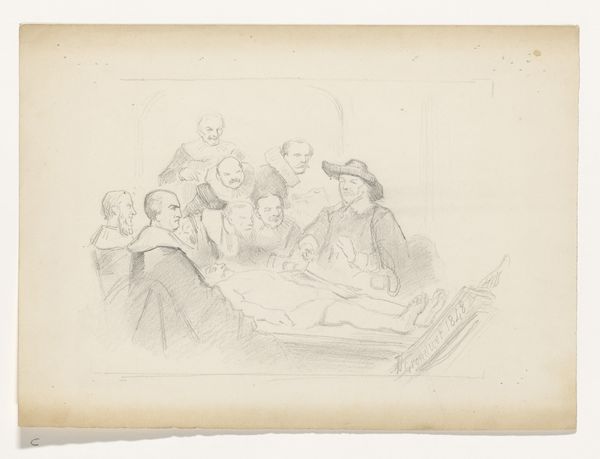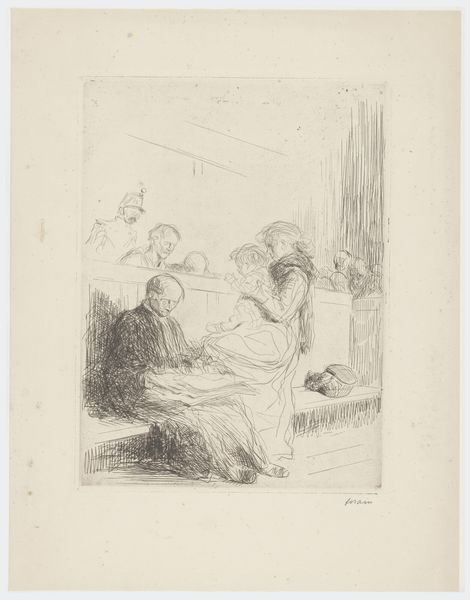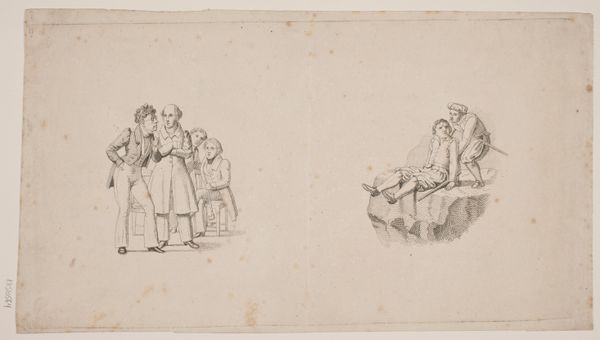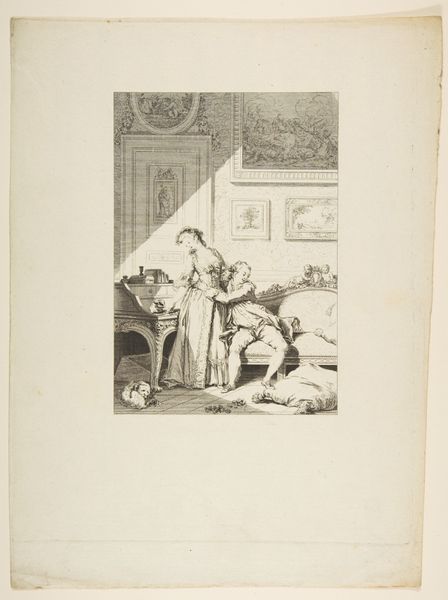
Dimensions: height 241 mm, width 166 mm
Copyright: Rijks Museum: Open Domain
Curator: Looking at this image, the overwhelming sensation I get is one of quiet despair. It feels very intimate, even melancholic. Editor: Indeed. We’re examining "Treurende mensen rondom stervende figuur", which translates to “Mourning People Around a Dying Figure,” created by Herman Frederik Carel ten Kate. Though the piece's creation dates span 1832 to 1891, it is a fascinating example of etching practices of the era, and intaglio as an art form. Curator: You can clearly see the hand of the etcher in those delicate lines, really showcasing the toll and effort of the manual labor of printmaking during this period. It has this quality of understated drama about it, even within the relatively small confines of a print on paper. Editor: It’s captivating how ten Kate captures such emotional weight through what appears to be a humble, accessible medium like etching. Consider how printmaking at this time facilitated broader distribution of imagery; did this render death more democratic in its representation, making the subject less sacred, more… consumable? Curator: That's a striking way to put it. The lines here – especially around the faces of the mourners – aren’t perfect, but that adds to the impact. Each line had to be cut, the material shaped so intentionally by labor. To me, that intentionality creates something more human, honest perhaps. Editor: And note the setting – a domestic space, suggesting perhaps a commentary on middle-class mortality. Was ten Kate intentionally leveling social structures in his imagery by depicting sorrow and loss within this kind of milieu? How do public exhibition practices influence the piece? Curator: It invites considerations of its social impact beyond the aesthetic; you are spot on to focus on those influences, of how social forces come together to influence the artwork, particularly who is producing, for whom and what resources were utilized. It also makes one think of art academies during this time period, especially in Netherlands, were certain types of resources valued and favored more, leading to a specific aesthetic. Editor: Absolutely. Understanding the artwork’s production within this period unveils so much. Thank you. Curator: It was fascinating, approaching the historical context by considering materials, and reflecting upon that level of intentionality.
Comments
No comments
Be the first to comment and join the conversation on the ultimate creative platform.
